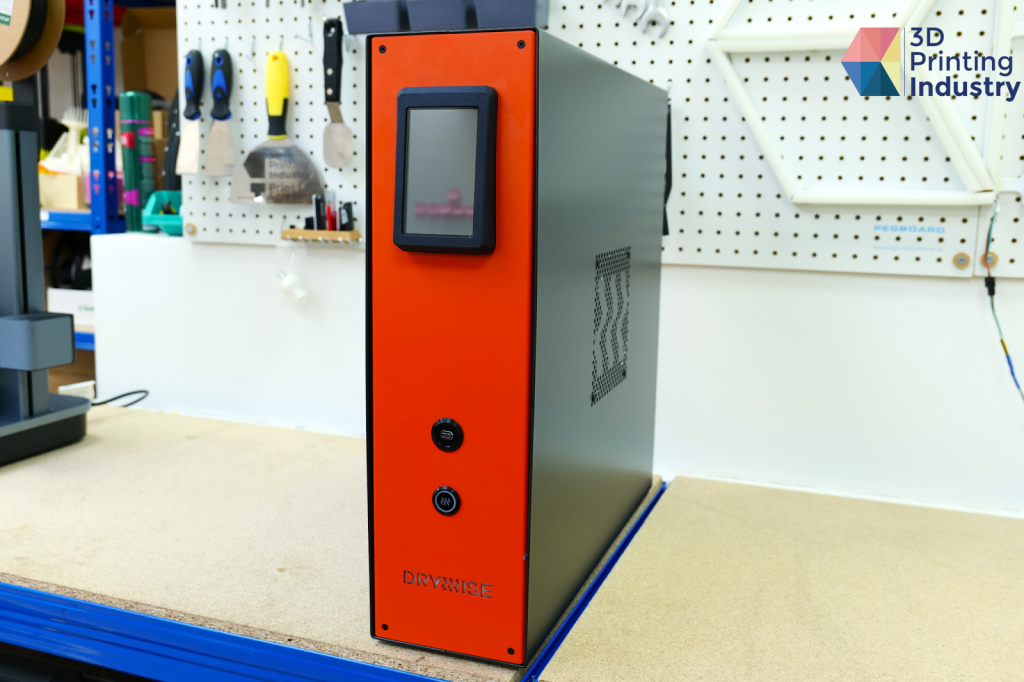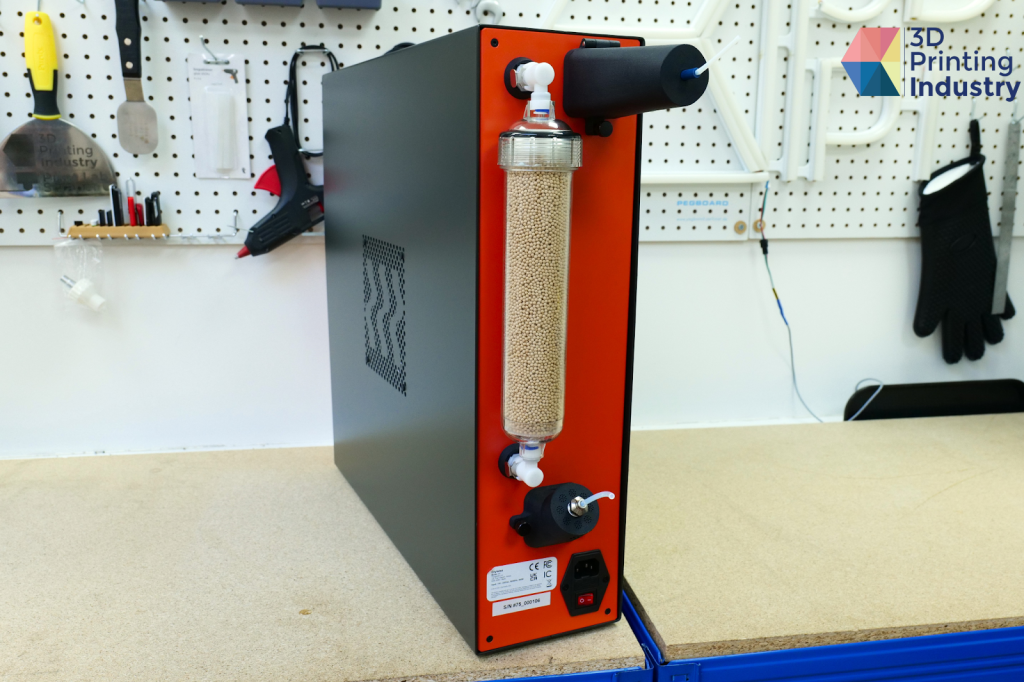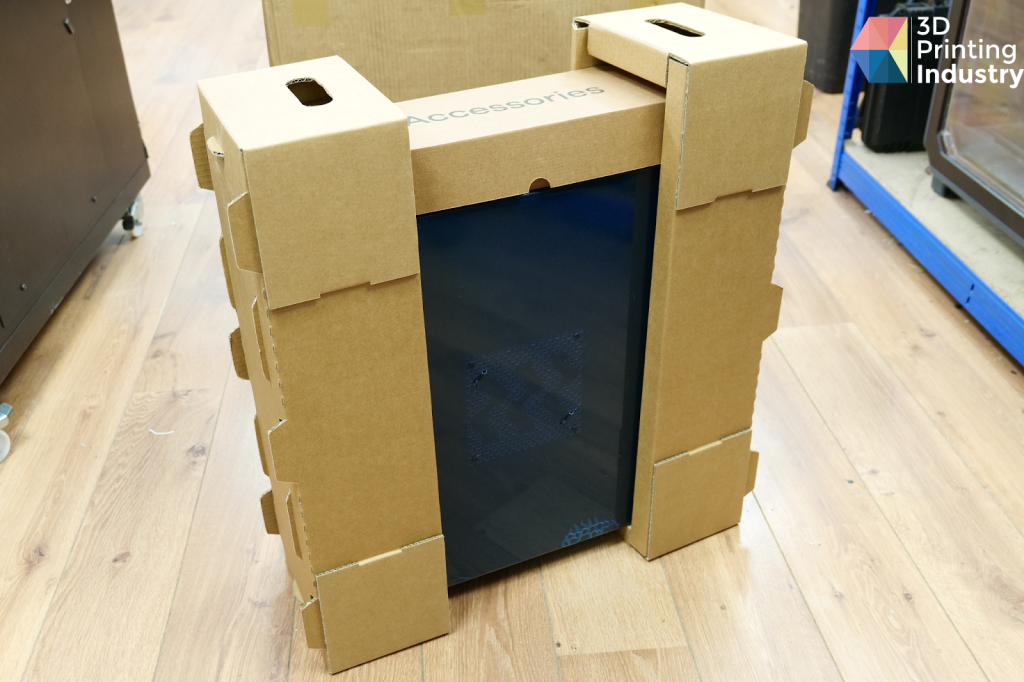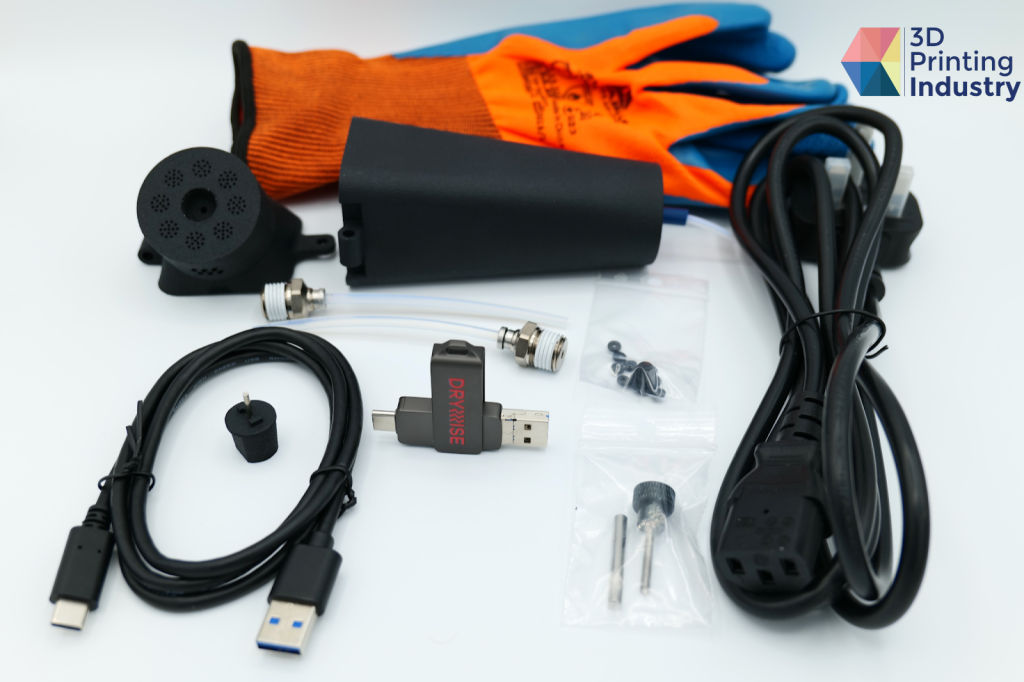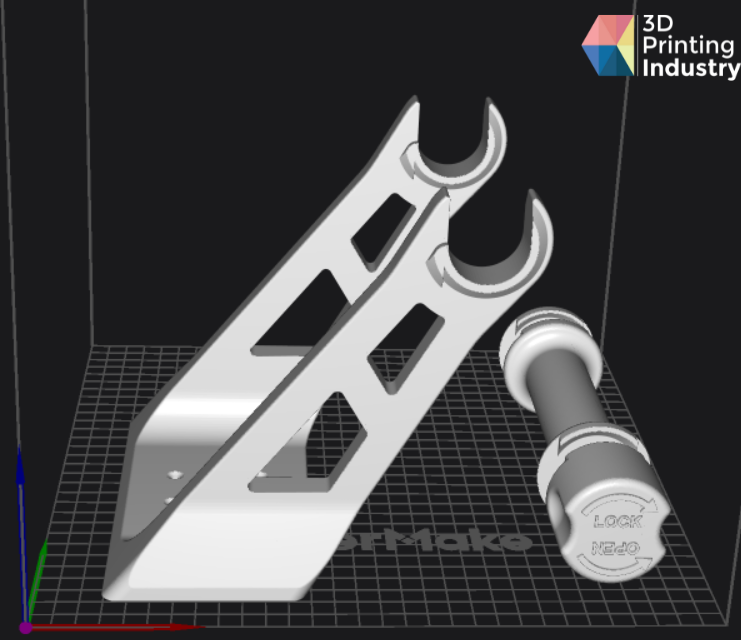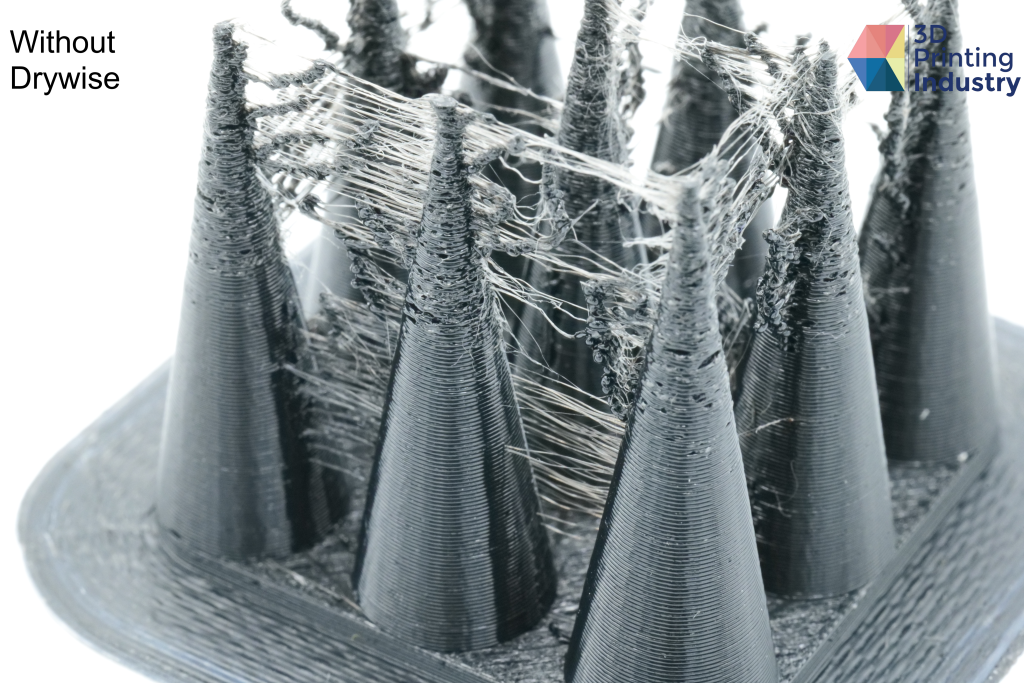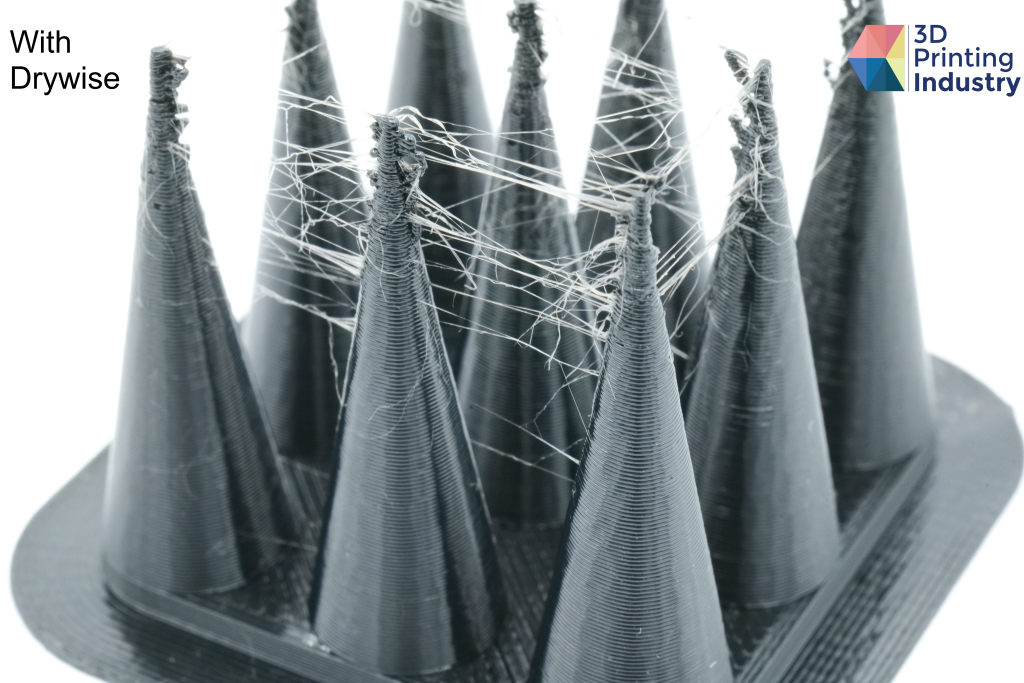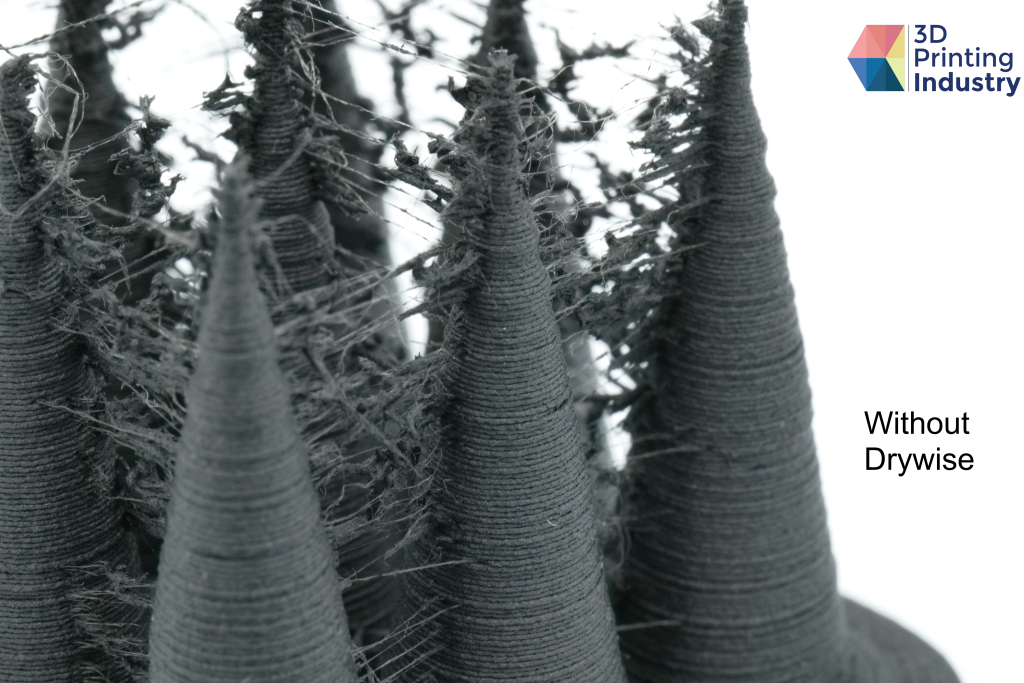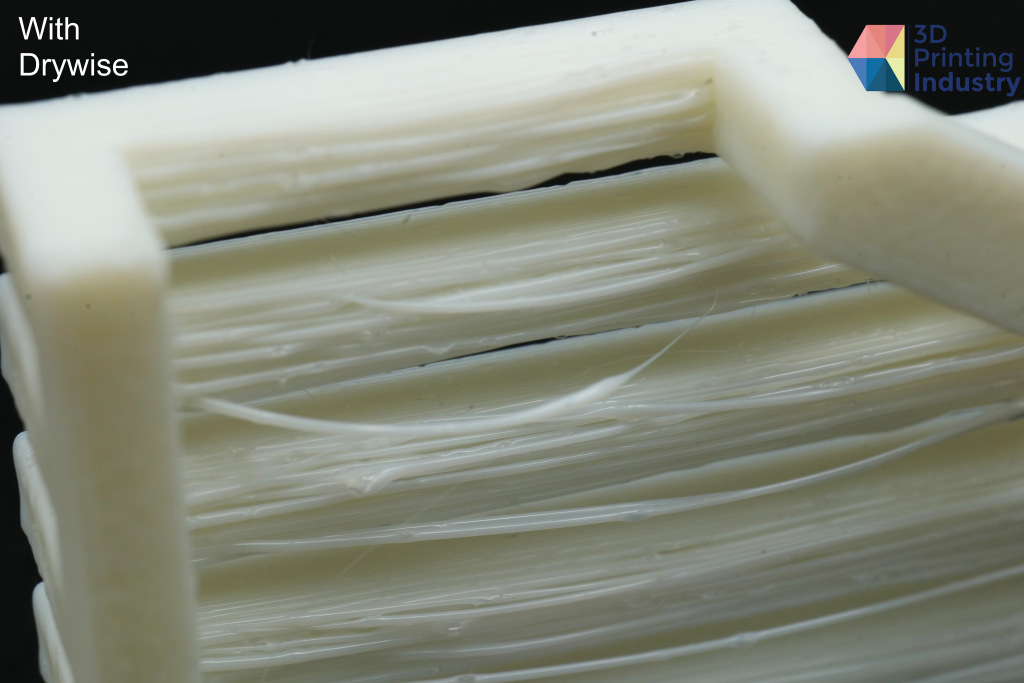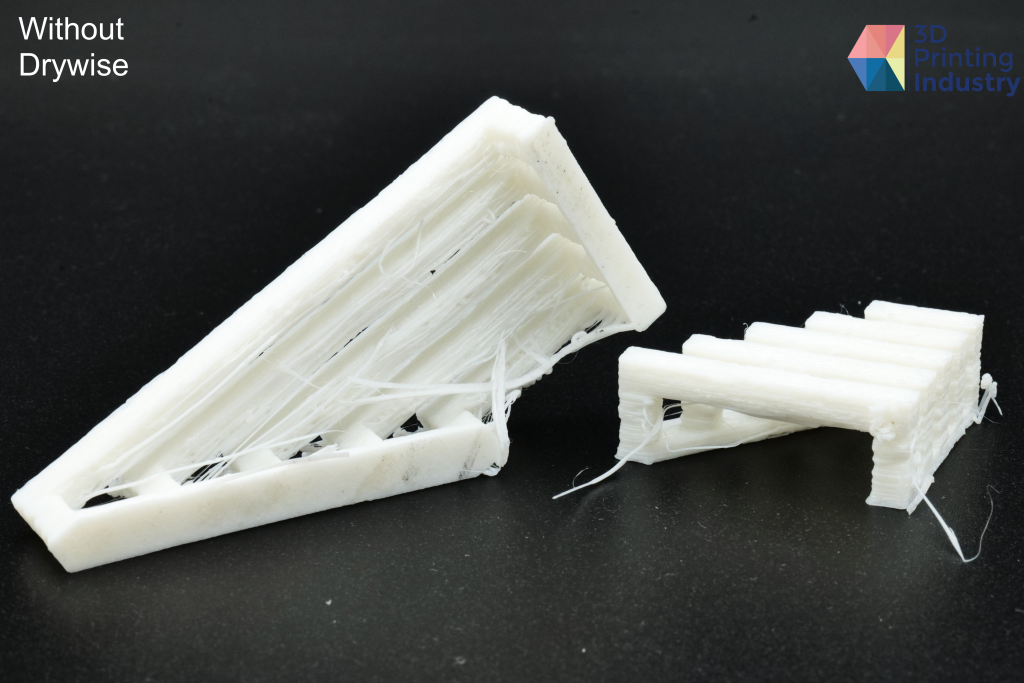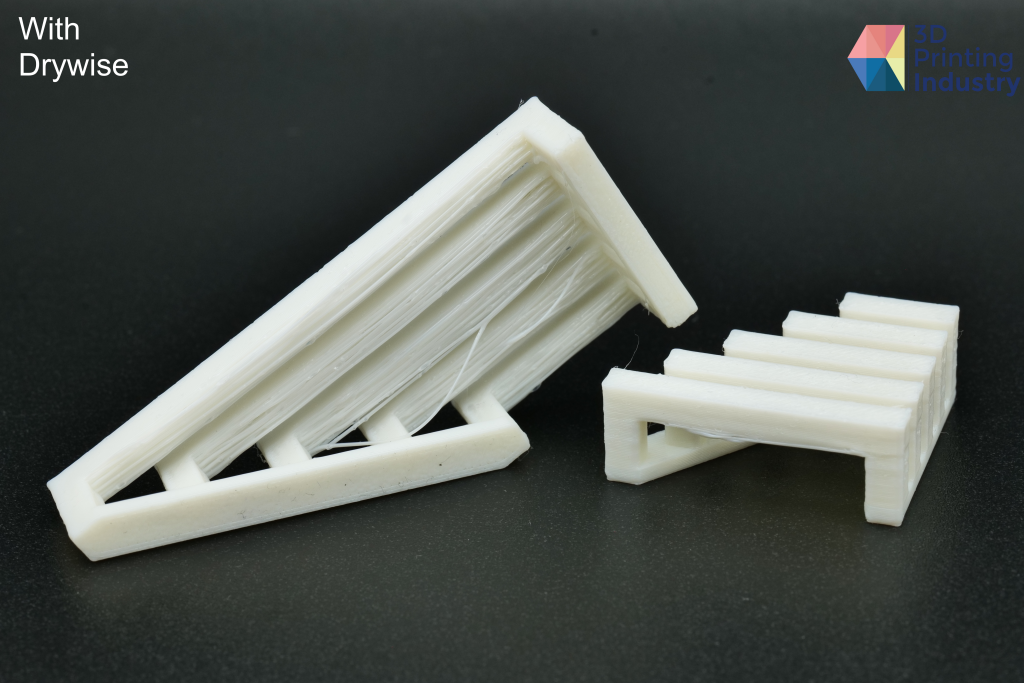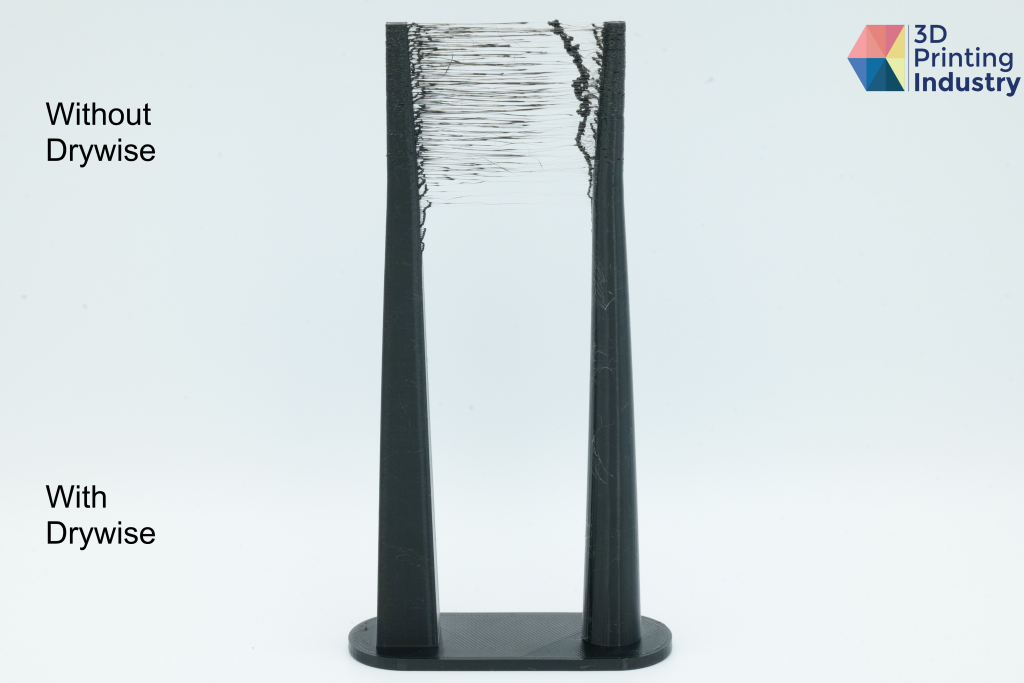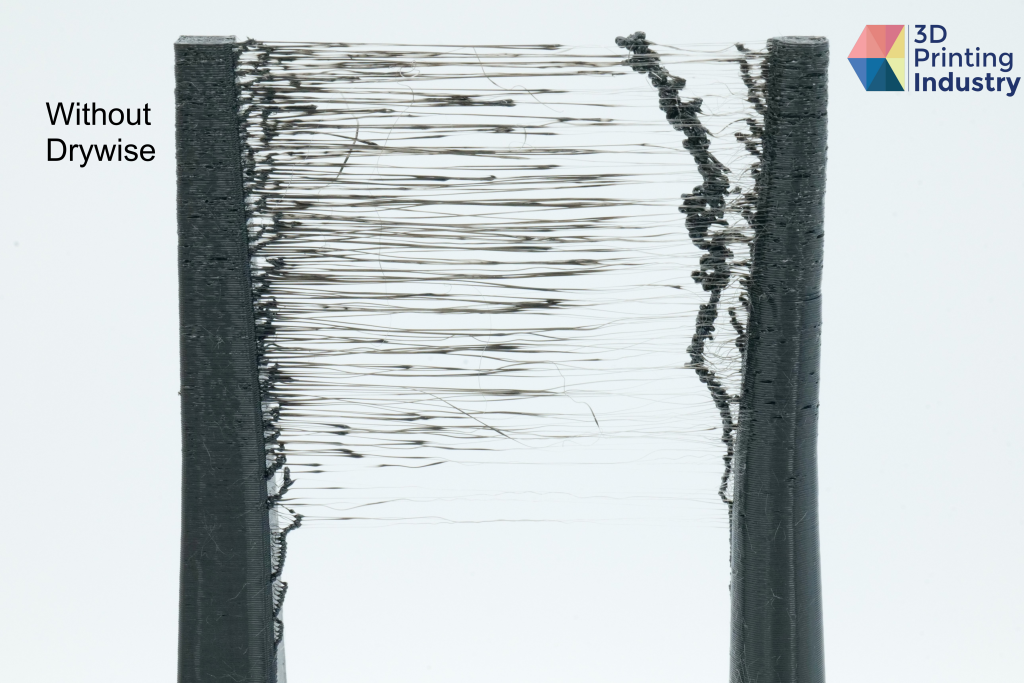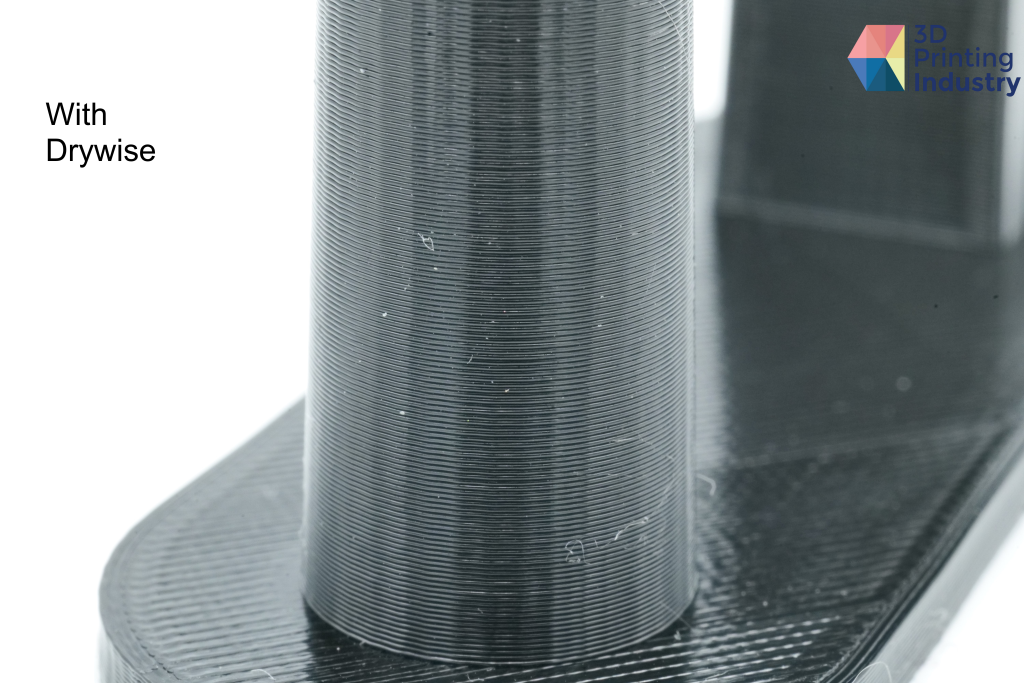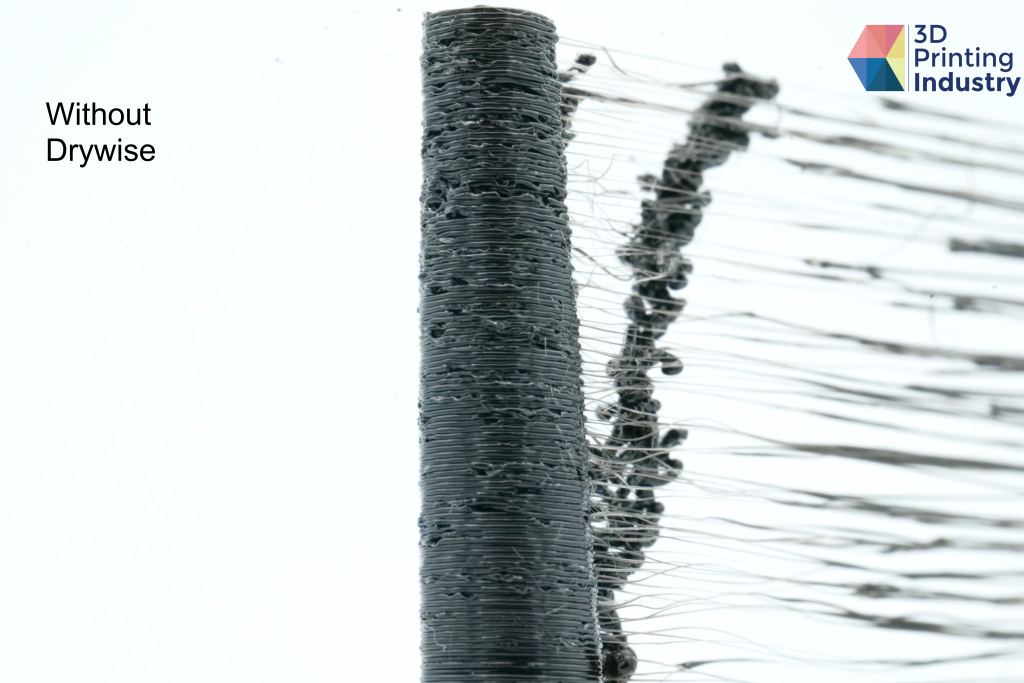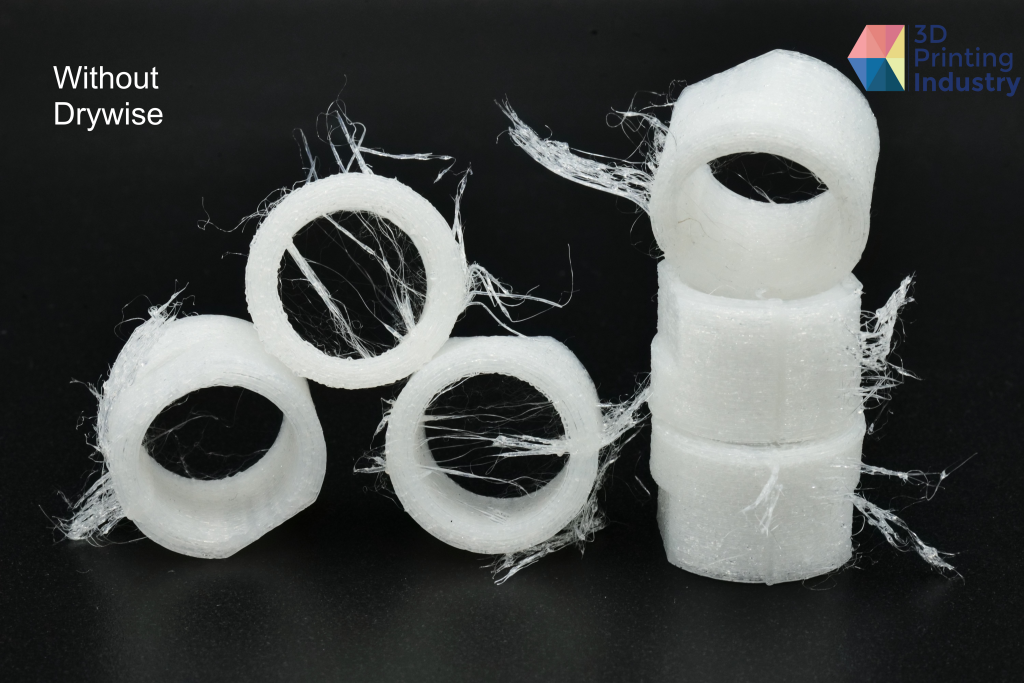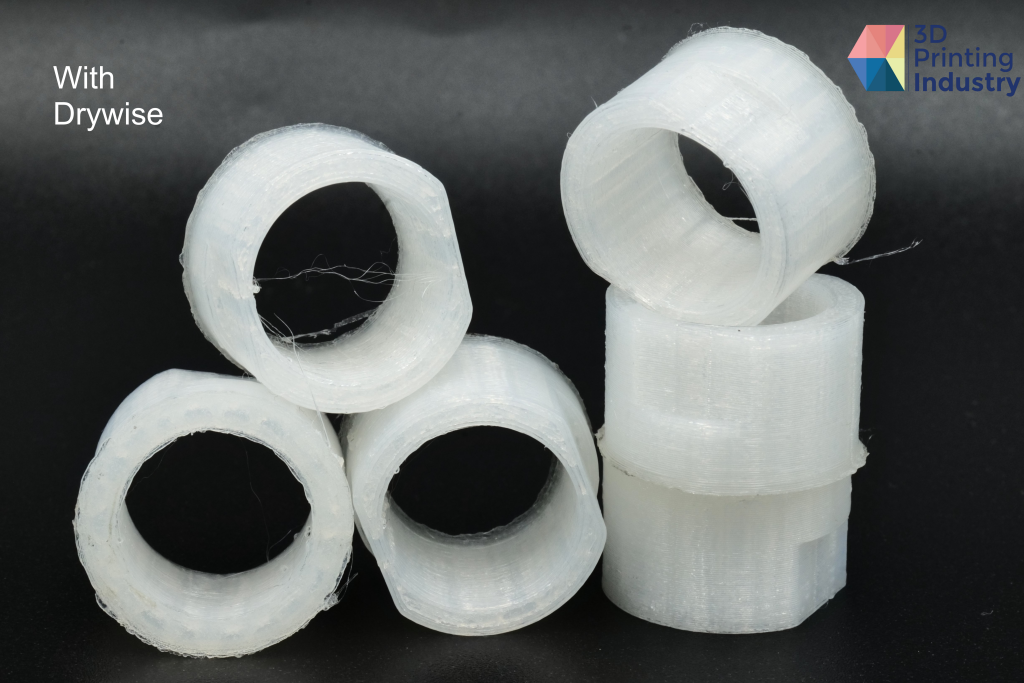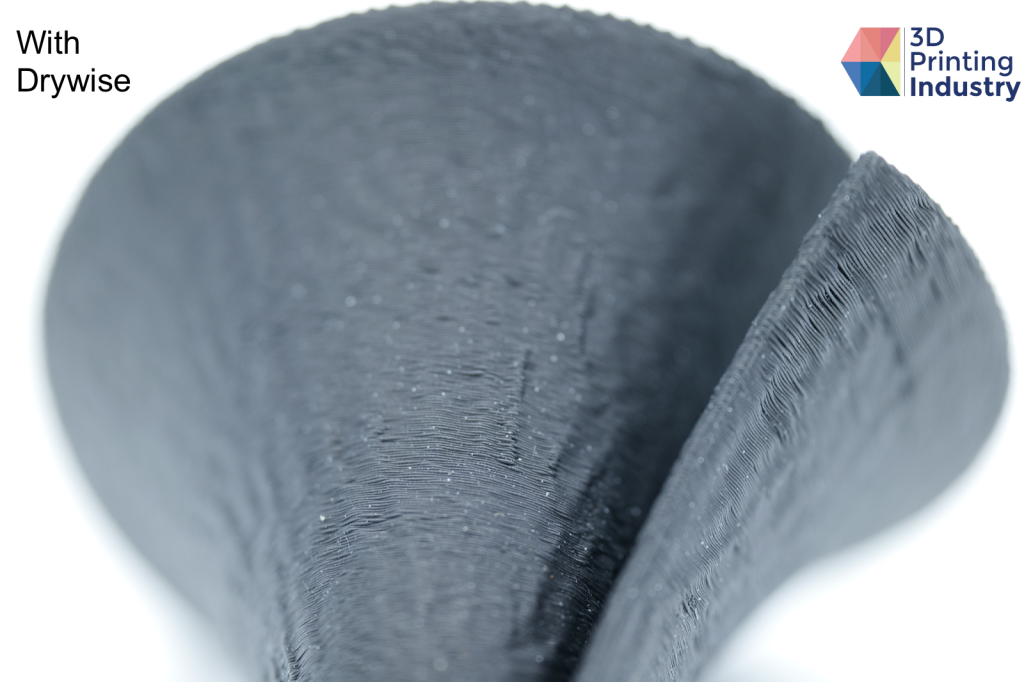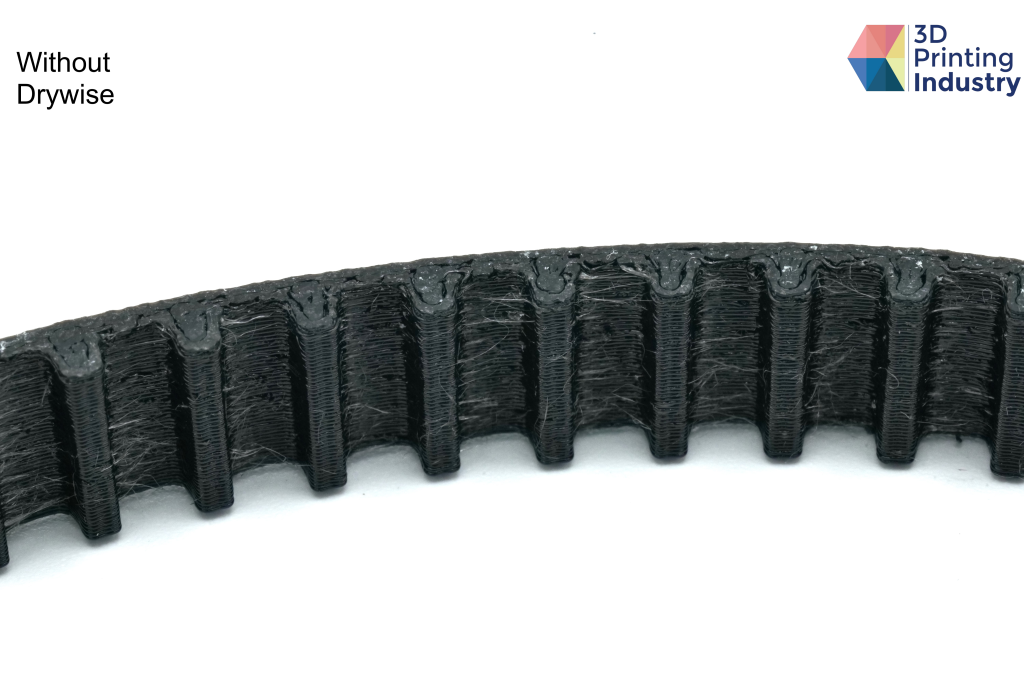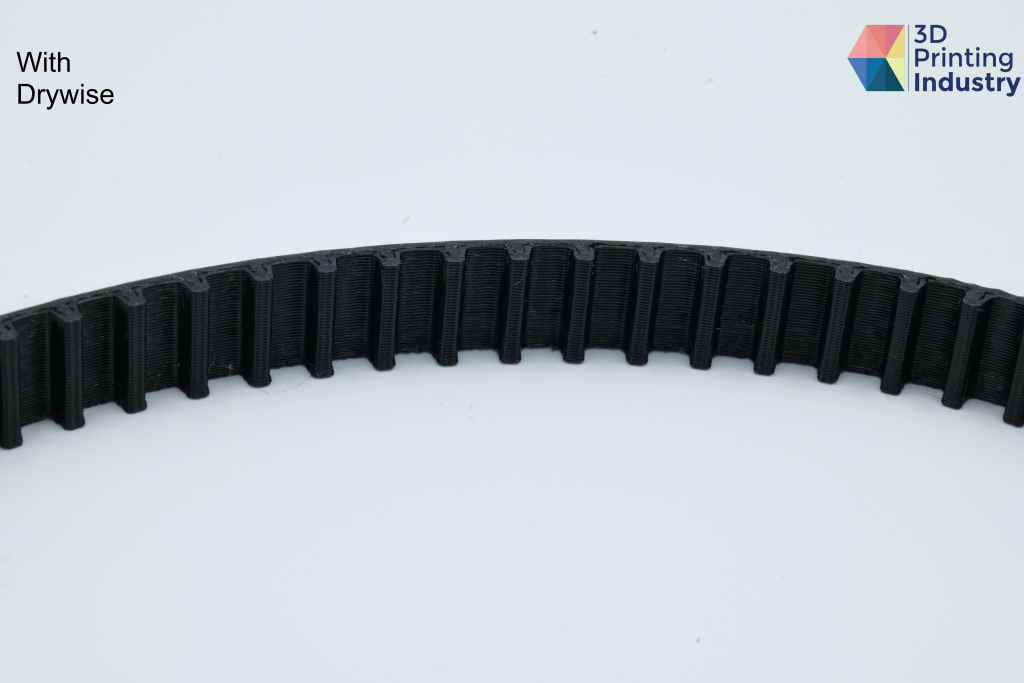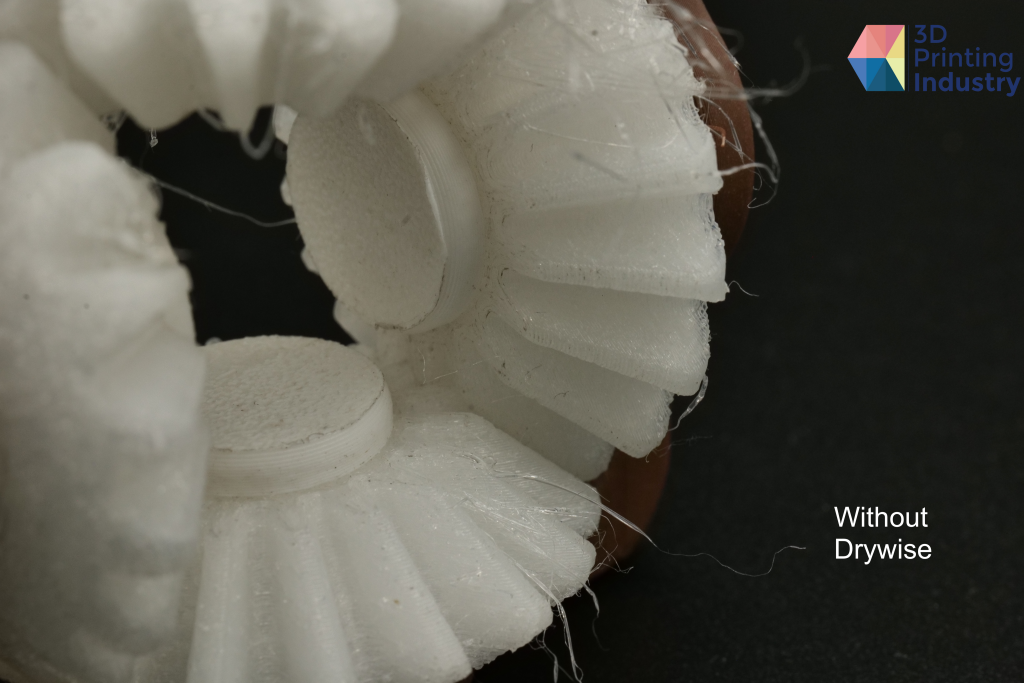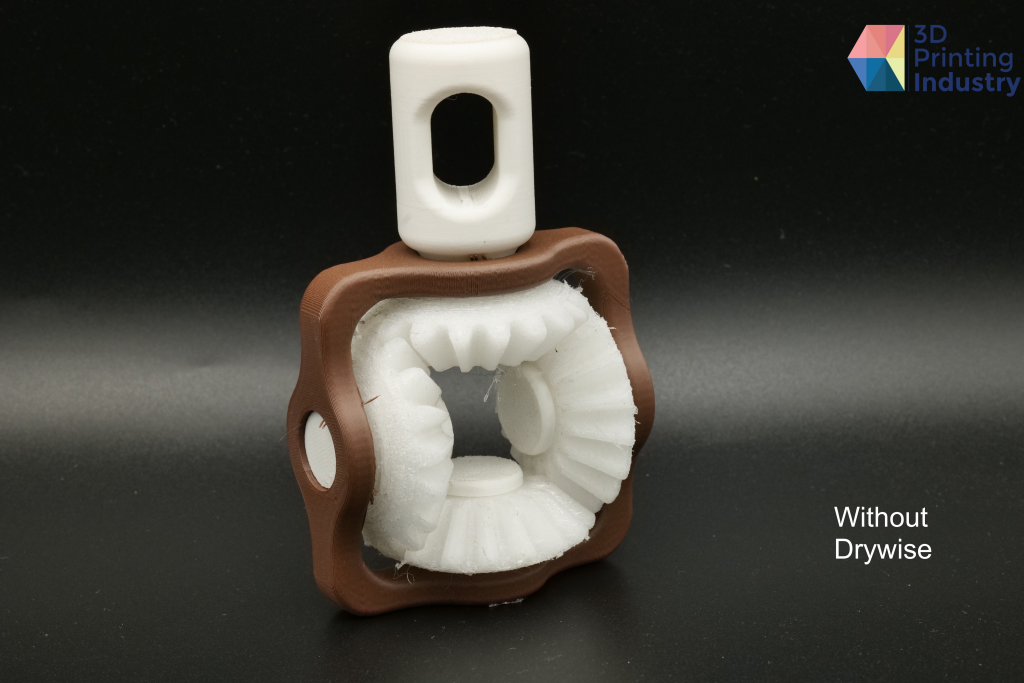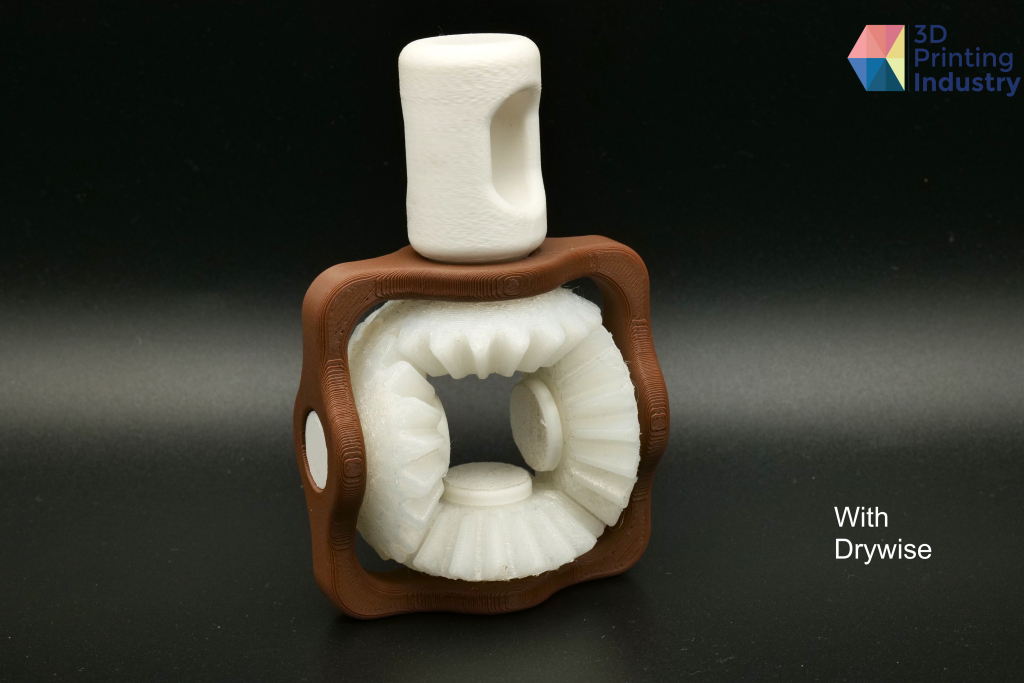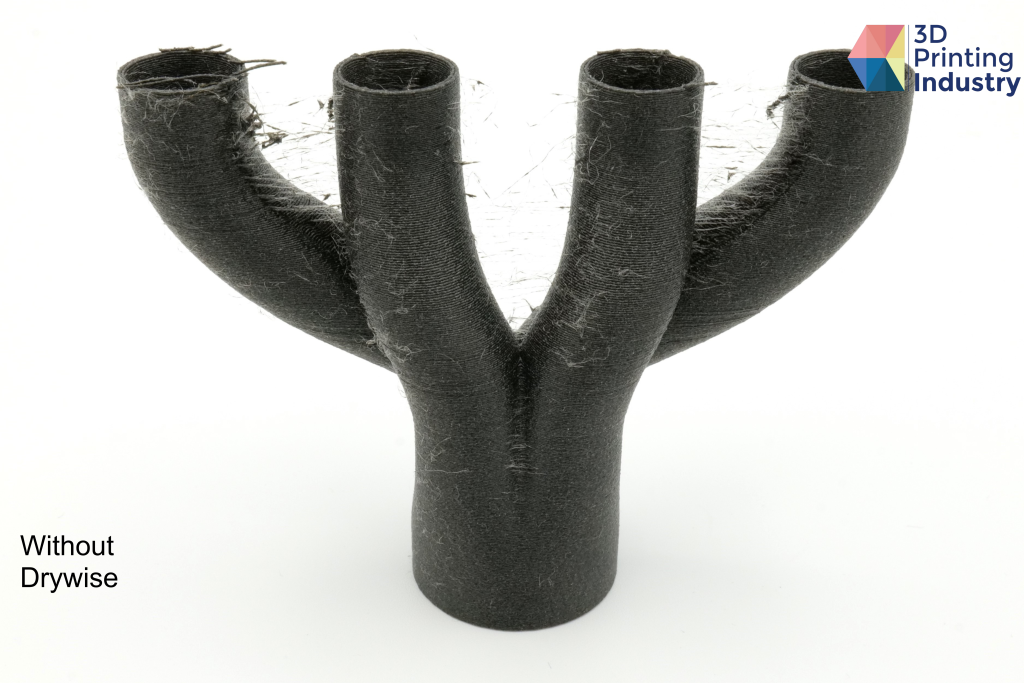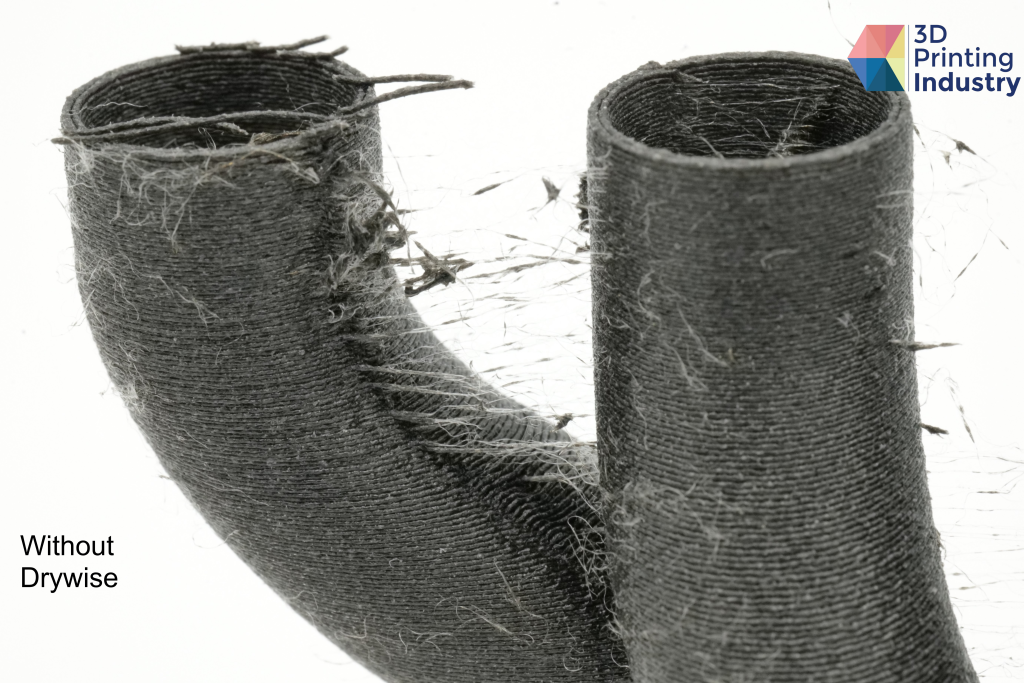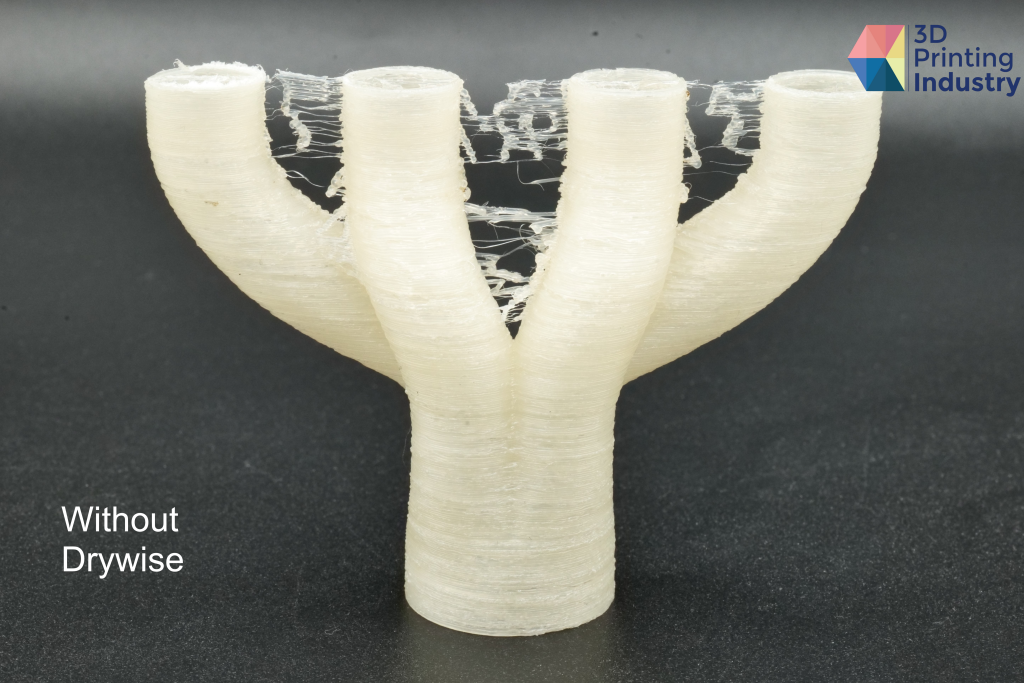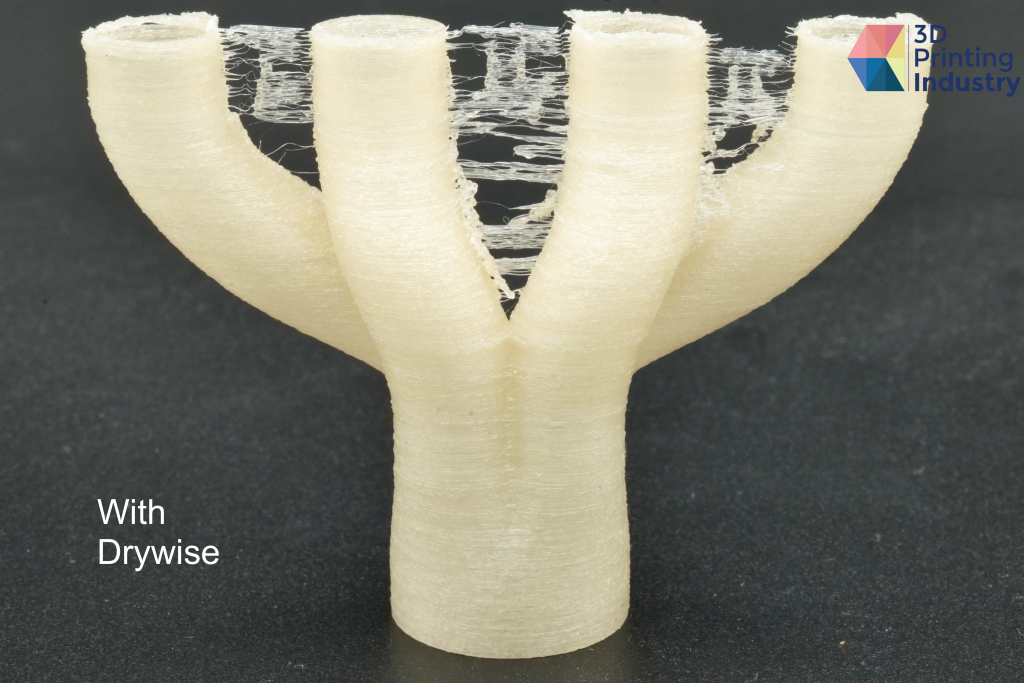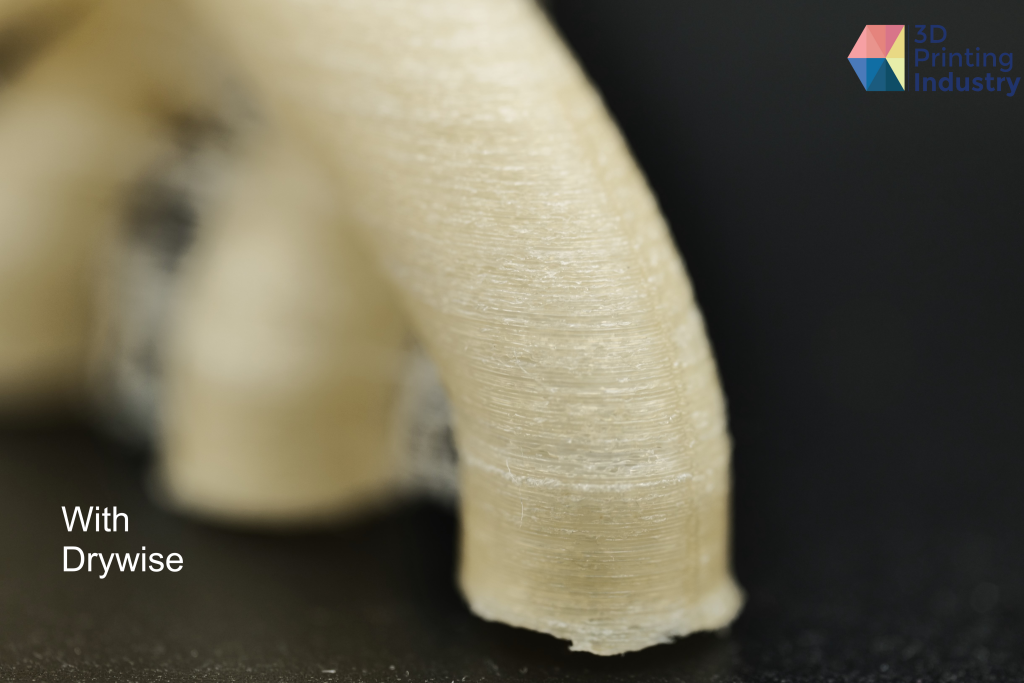In this article, we review the Drywise, a specialized filament drying system for FDM 3D printing from Thought3D, a Malta-based additive manufacturing R&D company.
3D printing with moist filaments negatively impacts final part quality, often causing poor surface finish and reduced mechanical properties. To overcome this problem, materials can be dried using ovens or food dehydrators. However, these non-purpose built solutions require users to dry entire spools at a time, and are not integrated into an automated process chain.
Launched in 2022, the Drywise is a filament drying system specially designed to connect directly to the 3D printer. The system dries material on demand, only treating the section of filament that is being extruded. This results in notable time savings and ensures a single drying cycle, eliminating any heat cycling of the material.
With prices starting at just €1,800, Thought3D’s filament dryer is targeted towards professional consumers looking to maximize the quality of their 3D printed parts. It can be purchased directly from the official Drywise website.
How does the Drywise enhance 3D printing?
The Drywise dries filament as it is being 3D printed, significantly speeding up the drying process. Preparing an entire filament spool in advance can take up to 48 hours, while Drywise requires less than 1 hour to pretreat very wet filament, before 3D printing. This significantly reduces downtime, which is particularly valuable to users targeting high-throughput production of parts.
The system’s smart sensors are designed to ensure that the material is dried to optimal conditions. This ensures that the filament isn’t damaged during the drying or 3D printing process, minimizing material waste and cutting associated costs for the user.
Pre-programmed material presets for a wide range of branded filaments are also included with the Drywise. Therefore, users don’t need to manually input drying settings before each, ensuring consistent and optimal drying results. This also removes guesswork, negating the need to research or experiment with different settings before achieving perfect results.
These sensors also prevent the system from overheating, automatically turning off the heaters if a clog is detected. This offers peace of mind, allowing users to confidently run their Drywise unattended within a lights-out manufacturing setting.
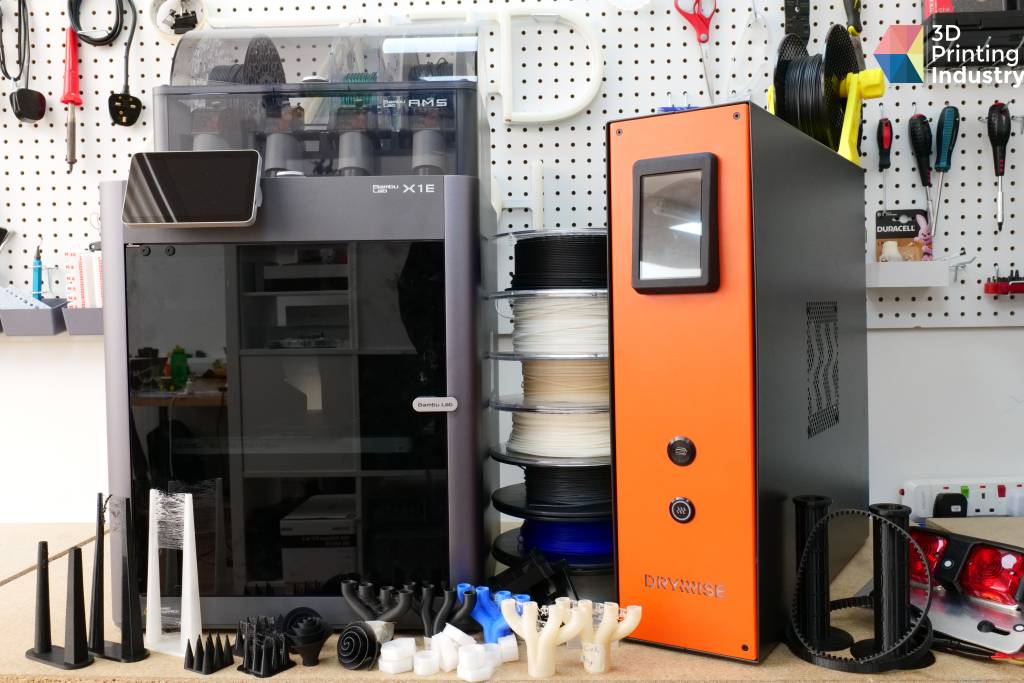
Drywise hardware and accessories
The Drywise is available in two different models that are optimized for filament diameters of 1.75mm or 2.85mm, respectively. In this review, our team assessed the 1.75mm version.
Fully enclosed within a metal casing, the system is compact and able to fit into most additive manufacturing work environments. A single filament exit port is located at the bottom of the system.
The low angle at which dried filament exits the Drywise creates high tension between the material and the 3D printer’s extruder. We found that this caused the filament to slip when using 3D printers with Bowden extrusion systems, such as the TRILAB AzteQ Industrial. However, this was not found to be a problem when 3D printing with direct driver systems, where the extruder is located directly above the 3D print head.
Moisture that is collected during the drying process is stored inside a desiccant tube located to the rear of the Drywise. These tubes can be easily removed and replaced as needed, minimizing 3D printer down time for users targeting high-volume production. The tubes can also be regenerated by pouring their contents into a container, and heating this at 240℃ for around 4 hours.
The 4.3” touch screen digital user interface stood out for its intuitive design, with numerous useful prompts and pop-ups which help to guide the user through the filament drying process.
Our Drywise was also delivered with a pre-heater, an optional accessory that can be purchased for €349. This component heats the materials before they are dried, further dehydrating the filament for more consistent and reliable results.
The pre-heater also enabled the Drywsie to be used with brittle filaments that have a tendency to snap. The add-on relaxes the filament before it enters the Drywise, resulting in less friction and a much lower probability of it snapping.
The Drywise’s front and rear panels, including the 4.3” touch screen, exit port, desiccant tube, and pre-heater. Photos by 3D Printing Industry.
The Drywise came securely packaged, with no damaged or missing parts. It took only 10-15 minutes to get our system up and running, with the installation process easily completed by a single person.
No filament spool holder is included in the package. Instead, a 3D printable model is available on the Drywise website. However this is not a necessity, as the spool holder of the 3D printer itself, or any other 3D printer that is nearby, can also be used.
Drywise packaging, kit contents, and 3D printable spool holder. Photos and images by 3D Printing Industry.
Benchmarking test results for the Drywise filament dryer
Most polymer filaments are hygroscopic, meaning that they absorb moisture from the atmosphere. 3D printing with a material that possesses even a small amount of moisture can have significant effects on the characteristics and quality of the final part.
To assess the performance of the Drywise, we conducted a number of tests comparing parts 3D printed with and without the filament dryer. We primarily used highly hygroscopic filaments such as TPU and nylon in our testing. These materials are expensive and commonly used in industrial applications, the target market of the Drywise.
For each test, the materials were left exposed to the environment prior to 3D printing, ensuring that they had absorbed enough moisture to severely impact part quality.
During the 3D printing process, moisture within wet material heats up and evaporates inside the nozzle, resulting in an increase in pressure. This forces filament to extrude while the 3D print head is moving, creating a stringing effect on the final part. To assess whether the Drywise can mitigate this issue, we conducted a retraction test.
Here, we used BASF TPU 64D and Lehvoss Luvocom 3F PAHT CF 9891 filaments. The BASF TPU combines high rigidity with good flexibility, while Luvocom’s carbon fiber-reinforced polyamide is strong and resistant to high temperatures. Both materials are optimized for the production of functional prototypes and end-use parts
When 3D printing with TPU, the Drywise achieved a noticeable reduction in stringing, especially along the lower sections of the spikes. The dried materials also exhibited less oozing, with noticeable improvements in surface finish and layer quality.
Non-dried TPU and dried TPU retraction results. Photos by 3D Printing Industry.
The PAHT CF 9891 results were also promising, with the dried filament exhibiting only faint strings at the spike tips. The non-dried material, on the other hand, experienced consistent defects throughout, with excessive stringing.
Non-dried PAHT CF 9891 and dried material retraction results. Photos by 3D Printing Industry.
Next, we conducted a bridging test to assess the difference between moist and dried material when 3D printing without supports. When using Lehvoss Luvocom 3F PAHT 9825 nylon filament, the Drywise enabled a much cleaner bridging model with less sagging than the non-dried filament.
The wet filament produced an audible crackling sound, indicating that moisture was boiling and evaporating during extrusion. This led to noticeable inconsistencies within the final part.
Overhang test 3D printed with non-dried and dried filament. Photos by 3D Printing Industry.
A half and half 3D print was then conducted. Within this test, a model was initially 3D printed with the Drywise. Midway through this process, the Drywise was paused, allowing the second half of the model to be extruded without drying. This enables a direct comparison of dried and non-dried material within a single part.
Using BASF TPU 64D, the dried lower section of the model achieved clean and consistent layers, with no surface defects. After removing the Drywise, the wet material created substantial oozing and stringing, as well as poor surface finish with various layer gaps.
This direct comparison highlights the benefits of using the Drywise for TPU material that has absorbed moisture. The point at which the 3D printer switched from dry to wet filament is clear to see, with the material deforming at the top of the model.
The half-and-half 3D printed model, with dried filament at the bottom and non-dried material at the top. Photos by 3D Printing Industry.
What impact does wet filament have on 3D printing accuracy? To answer this, we 3D printed hexagon and cylinder-shaped test pieces both with and without the Drywise. The measurements of these parts were then compared to their desired dimensions. Our results indicate a clear improvement in accuracy for parts 3D printed with the Drywise.
The mean difference for the dimensions of parts 3D printed with dry filament was 0.1465 mm, significantly lower than the 0.2186 mm achieved with their non-dried counterparts. Additionally, the overall standard deviation with the Drywise was 0.0454 mm, compared to the 0.0633 mm achieved without.
Hexagon and tube accuracy test parts 3D printed with non-dried and dried BASF PA filament. Photos by 3D Printing Industry.
Testing Drywise applications
A range of application tests, designed to assess the capabilities of the Drywise for real-world use-cases, were also conducted.
A lily impeller, generally used in pumps to create a centrifugal force which accelerates fluid outwards, was 3D printed in PLA. While this material is not overly hygroscopic, it is popular within the 3D printing community. This test is a good opportunity to determine whether there are noticeable benefits to drying PLA before 3D printing.
The results of this test clearly indicate the capabilities of the Drywise. The dried filament exhibited good geometry and no discernible defects, while its non-dried counterpart displayed noticeable stringing. However, the defects of the non-dried filament are not as pronounced as with other, more hygroscopic materials such as nylon or TPU.
Lily Impeller 3D printed with non-dried and dried PLA. Photos by 3D Printing Industry.
Next, TPU was used to 3D print a drive belt, a key component for industrial applications ranging from manufacturing machinery to automotive drive trains.
When 3D printed with the Drywise, the part featured a good surface finish and seam quality, with no visible imperfections. On the other hand, the non-dried filament caused inconsistencies and gaps in between layers, due to its high moisture content. Notable stringing across all teeth of the belt was also evident, something which was not seen on the Drywise-3D printed part.
Drive belt 3D printed with non-dried and dried filament. Photos by 3D Printing Industry.
A differential gearbox was next 3D printed using PA, a nylon material well suited to gear components due to its durability, strength, and resistance to wear and tear. The Drywise-3D printed gears were fully functional, rotating freely without resistance.
The gearbox made from non-dried material featured tight spots at certain rotation points. This was due to defects in the 3D printed teeth, caused by the moisture in the material. Stringing also created resistance between the gears.
Differential gearbox 3D printed with non-dried and dried filament. Photos by 3D Printing Industry.
Finally, we used two different spools of MatterHackers NylonX (PA-CF) and PolyaMide CoPA nylon filament from Polymaker to 3D print inlet manifold models. Nylon materials are well suited to the production of these parts, due to their high resistance to heat and vibration. While consumer vehicle inlet manifolds are generally made from aluminum or magnesium, nylon is often used in motorsport applications to eliminate excess weight.
Both materials have preset drying options on the Drywise, meaning that the drying process should be calibrated to achieve optimal results.
The non-dried NylonX material exhibited substantial stringing across the part, a defect that was drastically reduced by the Drywise. In fact, the part 3D printer with dried filament featured no visible issues at all, with an incredibly clean surface finish.
Inlets 3D printed with NylonX non-dried and dried filament. Photos by 3D Printing Industry.
Those who frequently use FDM 3D printers may have at least one old, long-forgotten spool of filament lying around. Material exposed to the elements for multiple years has likely absorbed enough moisture to significantly compromise its mechanical properties. This can make the filament unprintable, and therefore liable to be thrown away and wasted.
Is it possible to save these filaments? To find out, we tasked the Drywise with drying a PolyaMide CoPA nylon spool that had been exposed to the elements for six years.
Unfortunately, the Drywise failed to fully restore this filament. Retractional stringing and oozing persisted in both wet and dry models. However, the model 3D printed with dried CoPA felt much stiffer than its wet counterpart, indicating a partial restoration of its mechanical properties.
Inlet manifolds 3D printed with PolyaMide CoPA non-dried and dried filament. Photos by 3D Printing Industry.
Drywise: A filament dryer worth investing in?
The Drywise is an effective and affordable filament drying system optimized for industrial applications. It improves the quality and accuracy of 3D printed parts, especially when using moisture-sensitive materials such as TPU and nylon.
This results in components that possess good mechanical properties, essential for industrial applications which demand consistent high quality. Our testing highlighted significant improvements compared to undried filament, even producing parts with previously unprintable material.
The Drywise’s internal path could be improved. We frequently encountered collisions with an internal intersection, hindering the filament loading process. This can be minimized by cutting or shaping the filament, making it as pointed as possible with no protrusions before it is inserted into the dryer.
Exploring different orientations and possibly automating the filament loading process would also increase its compatibility with 3D printers of different sizes. This would improve the movement of filament after it has been dried, enhancing the loading, drying, and 3D printing process as a whole.
Most importantly, the Drywise offers something which is priceless for industrial users – peace of mind. Whether fulfilling large part orders or 3D printing with expensive materials, the dread of a failed print job is feeling all too familiar within the industry. These problems are overcome by the Drywise, a key weapon in the arsenal of any user looking to achieve high-quality 3D printed parts the first time.
Despite some small areas for improvement, the Drywise stands out as an effective and affordable product well suited to industrial FDM 3D printing workflows. With an intuitive UI, it allows users to efficiently overcome challenges with hygroscopic materials, ensuring the reliable production of high-quality parts.
The ongoing addition of optimized material presets is set to further enhance the capabilities of the Drywise, promising even greater results when 3D printing with saturated filament.
Technical Specifications
| Dimensions | 520 x 500 x 145 mm |
| Net weight | 12kg |
| Voltage | 100 – 240 VAC |
| Maximum Power | 350W |
| Connectivity | USB-C |
| Operating Sound | 50 dBA |
What is the future of 3D printing?
What near-term 3D printing trends have been highlighted by industry experts?
Subscribe to the 3D Printing Industry newsletter to keep up to date with the latest 3D printing news. You can also follow us on Twitter, like our Facebook page, and subscribe to the 3D Printing Industry Youtube channel to access more exclusive content.
Are you interested in working in the additive manufacturing industry? Visit 3D Printing Jobs to view a selection of available roles and kickstart your career.
Featured image shows the Drywise filament drying system connected directly to a 3D printer. Photo by 3D Printing Industry.



